Who’s at Fault in a Rear-End Collision?
Imagine driving in heavy traffic, glancing at your phone for a split second, and then suddenly slamming into the car in front of you. Rear-end collisions happen all too often on our roads, and the question of who’s at fault in a rear-end collision can be complex.
In most cases, the rear driver is held responsible for a rear-end collision. But there are situations where the lead driver can also be at fault. Understanding the nuances of liability in rear-end collisions is crucial if you ever find yourself in such an accident. Read on to learn about the factors that determine fault in rear-end collisions and how legal professionals can help you navigate the process.
Key Takeaways
Rear-end collisions can be attributed to driver error, brake failure and slippery road surfaces.
Fault is determined by considering factors such as road conditions and driver conduct. Some states use a comparative fault system.
Prevention of rear end accidents relies on safe driving habits like minimizing distractions & being aware of the environment.
Determine Who’s at Fault in a Rear-End Collision For Establishing Liability

Rear-end collisions are a common type of motor vehicle accidents, often resulting in injuries and property damage. Establishing liability in rear-end collisions is not always straightforward, as fault may be attributed to the lead driver, the rear driver, or even another vehicle in certain circumstances.
It is generally assumed that the driver in the rear is liable in such collisions due to their failure to maintain a safe following distance. However, there are instances where the at fault driver may be the lead driver, causing the accident, and the other driver is not responsible.
Examining the common causes of rear-end accidents and the factors that affect fault determination is a vital step in determining liability.
Common Causes of Rear-End Accidents
Tailgating, distracted driving, and abrupt braking are some of the most common causes of rear-end collisions. Distracted driving, in particular, is a growing concern on our roads, with drivers:
texting
eating
adjusting the radio
holding the steering wheel
These distractions can lead to slower reaction times, increasing the chances of rear-end collisions.
Apart from driver error, brake failure and slippery road surfaces can also contribute to rear-end collisions when a driver fails to maintain a safe following distance. Between 20% and 28% of all car accidents are estimated to involve one driver rear-ending another.
Factors Affecting Fault Determination In A Rear-End Collision
When determining fault in rear-end collisions, various factors are taken into consideration. Road conditions such as weather, visibility, and road surface can all have an effect on fault determination. Driver conduct, including velocity, tailgating, and inattentiveness, can also influence the assignment of liability.
In some states, fault determination systems like California’s “comparative fault” system allocate fault between drivers based on their respective levels of negligence. Consulting a car accident attorney can be beneficial in protecting your rights and interests in rear-end collision cases.
When the Lead Driver is Liable
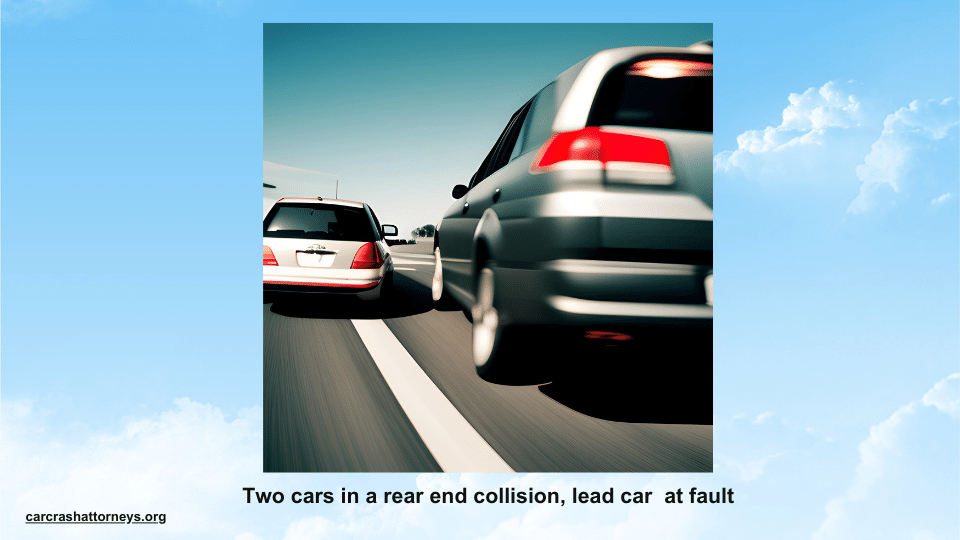
Although the rear driver is generally held responsible for rear-end collisions, there are situations where the lead driver of the lead vehicle may be found liable. These scenarios include sudden deceleration or brake checking, reversing or failing to move, or having inoperative brake lights.
Understanding these circumstances helps ensure fair fault determination and compensation for damages.
Sudden Stops and Brake Checking

Sudden stops and brake checking refer to instances where the lead driver abruptly stops or brakes, potentially causing the trailing driver to collide with them. These incidents may be intentional or unintentional, and the lead driver is typically held liable for a rear-end collision if they abruptly cease motion or brake check the trailing driver.
When determining fault in sudden stop and brake checking scenarios, the speed of the vehicles, the distance between the vehicles, and the visibility of the lead driver’s brake lights must be taken into account.
Reversing or Failing to Move

Reversing or failing to move in rear-end collisions can lead to accidents and potential injuries. In rear-end collisions involving reversing cars, fault in a rear is typically assigned to the trailing driver. The consequences may include damage to the vehicles, potential injuries, and liability for the driver reversing.
However, if the trailing driver can demonstrate that the lead driver’s negligence played a role in the collision, the lead driver may be held liable.
Malfunctioning Brake Lights
Malfunctioning brake lights can be a factor in rear ends, particularly when the trailing driver cannot see the lead driver’s intention to stop. In such cases, the lead driver may be held liable for the accident.
Nevertheless, other factors like the trailing driver’s attentiveness and following distance should also be considered in determining fault.
Comparative vs. Contributory Negligence When Determining Who’s at Fault in a Rear-End Collision
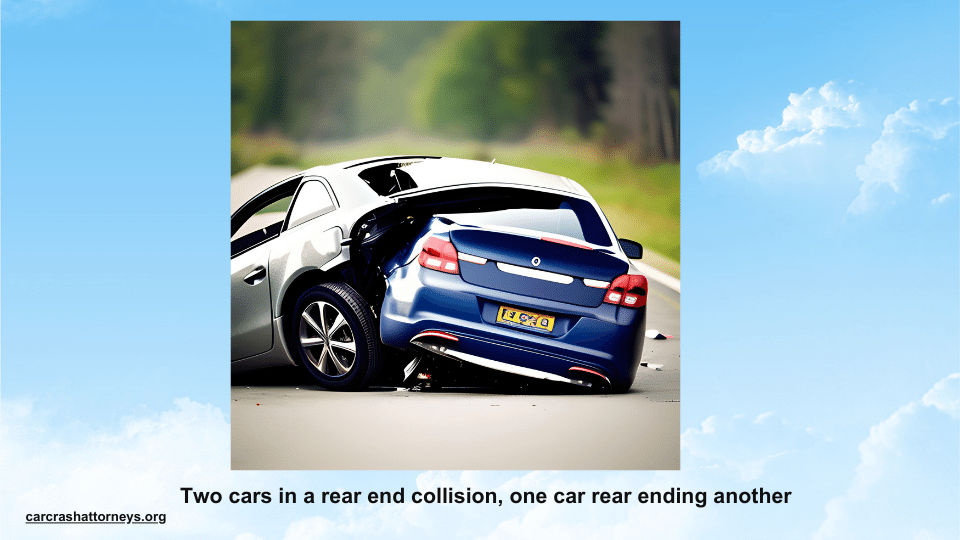
Comparative and contributory negligence systems play a crucial role in determining fault and awarding damages in rear-end collisions. Firstly, comparative negligence states apportion fault between drivers based on their respective levels of negligence, while contributory negligence states may prohibit recovery if the plaintiff is found to have contributed to the accident.
Grasping the differences between these systems aids in navigating rear-end collision claims and ensures fair compensation.
Comparative Negligence States
In comparative negligence states, fault is allocated between drivers in rear-end accidents according to their respective levels of negligence. An individual may still be eligible to pursue a claim for damages even if they are found to be less than 50 percent at fault, though the amount of damages awarded will be reduced in accordance with their degree of negligence.
Comparative negligence allows for a more equitable distribution of liability and financial responsibility in rear-end collisions.
Contributory Negligence States
In states that recognize contributory negligence, if the driver who was rear-ended is found to have any degree of fault for the accident, they may be denied any compensation for damages. This system can be harsh, potentially leaving injured parties without recourse for their losses.
Some contributory negligence states include:
Alabama
Maryland
North Carolina
Virginia
District of Columbia
It is essential to consult with a car accident attorney to understand the implications of contributory negligence in your rear-end collision case.
Investigating Who’s at Fault in a Rear-End Collision
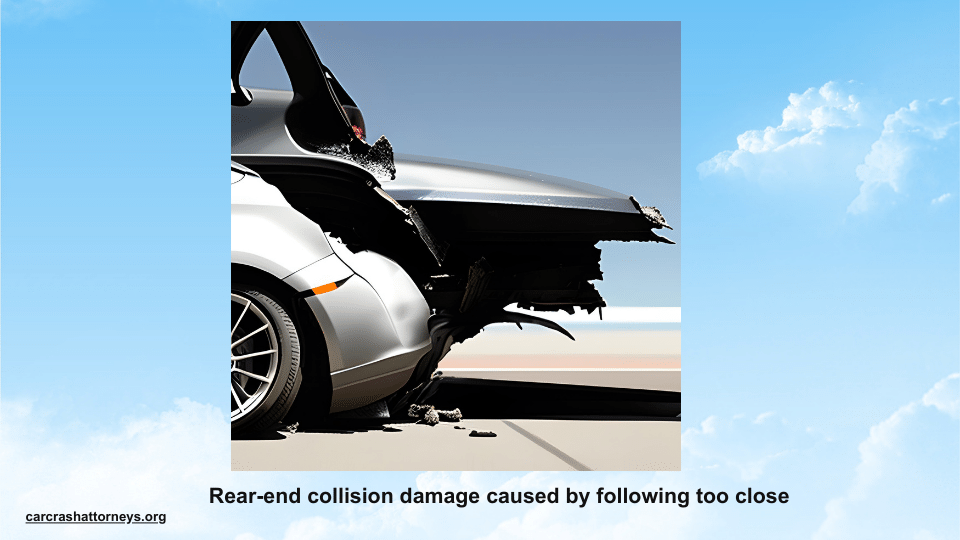
Carrying out a thorough investigation helps ascertain fault in rear-end collisions, guaranteeing accurate fault determination and recompense. Legal professionals can assist in the investigation process to determine the liable party or parties involved in a rear-end collision.
The investigation process entails collecting all pertinent evidence, such as witness statements, police reports, and photographic evidence, to determine fault. Consulting an attorney after a rear-end collision, regardless of fault, can help protect your rights and interests.
Seeking Legal Help After a Rear End Accident
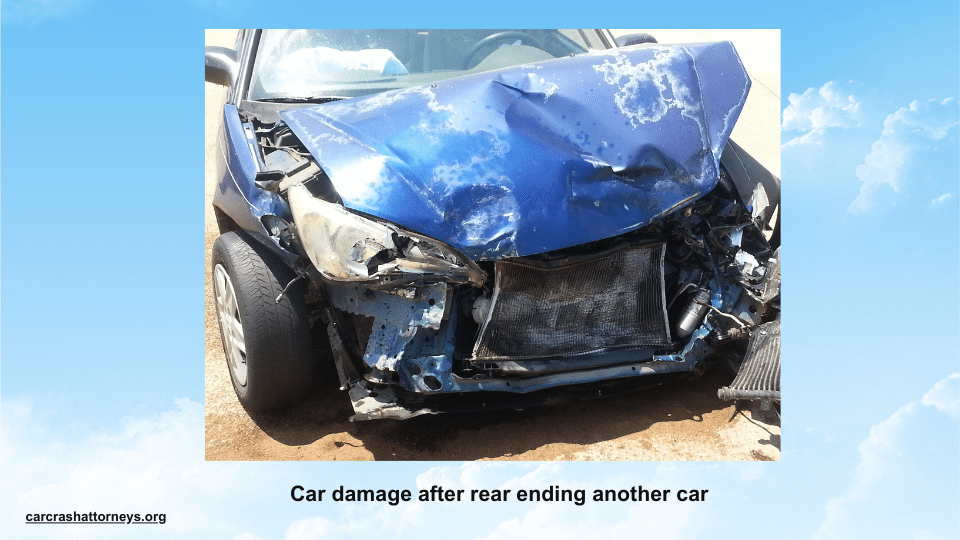
After a rear-end accident, securing legal counsel can help ensure proper fault determination and appropriate remuneration. A law firm can conduct a thorough investigation of the incident and collect all pertinent evidence required to safeguard the client’s rights and demonstrate liability.
Additionally, legal professionals, such as a car accident lawyer, can help negotiate with insurance companies and navigate the complex legal process, ensuring the injured party receives fair compensation for their losses. Don’t hesitate to consult with an experienced car accident attorney to protect your rights and interests following a rear-end collision.
Preventing Rear End Collisions
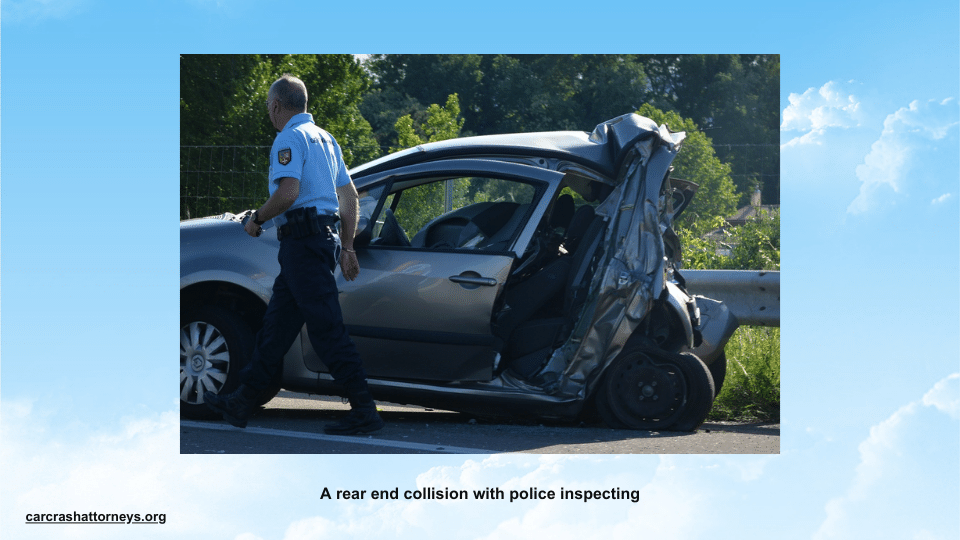
Preventing rear-end collisions begins with promoting safe driving habits. The maintenance of a safe following distance aids in averting rear-end collisions and cultivating safe driving practices. It enables drivers to have sufficient time to respond to unforeseen occurrences on the road.
Additionally, drivers should:
Minimize distractions while driving, such as texting, talking on the phone, eating, drinking, and adjusting the radio
Be mindful of the weather, road, and traffic conditions
Be aware of any potential hazards on the road
Following these guidelines can help reduce the risk of rear-end collisions.
Summary
Rear-end collisions are complex incidents that require a thorough understanding of liability, fault determination, and the role of legal professionals in ensuring fair compensation.
By exploring the common causes of rear-end accidents, the factors that affect fault determination, comparative and contributory negligence systems, and the importance of legal counsel, this blog post has provided valuable insights into navigating rear-end collision claims.
Remember, safe driving practices and seeking legal help when needed are crucial in preventing rear-end collisions and ensuring just outcomes for all parties involved.
Frequently Asked Questions When Determining Who’s at Fault In a Rear-End Collision
Is it always my fault if I rear-ended someone?
Generally speaking, the driver in the back will be found at fault for a rear-end collision. However, it is not always the case and liability should be assessed by an experienced attorney.
Why is the driver to the rear usually at fault in a rear-end collision?
In a rear-end collision, the driver of the rear vehicle is usually found at fault due to following too closely or being distracted. Some states even have presumptive laws that hold the rear driver responsible.
What counts as a rear-end in an accident?
Rear-end accidents are a common occurrence and occur when the front bumper of one vehicle collides with the rear end of another. They can be caused by inattention, intoxication, road defects, weather conditions and other factors.
What are some common causes of rear-end collisions?
Tailgating, distracted driving, and abrupt braking are some of the most common causes of rear-end collisions, leading to dangerous and potentially deadly situations.
Can the lead driver be held liable in a rear-end collision?
Yes, the lead driver can be held liable in a rear-end collision if they were responsible for sudden stops or brake checking, reversing or failing to move, or having malfunctioning brake lights. These are all examples of negligence on the part of the lead driver, and can result in them being held liable for any damages caused by the collision.
Further Reading: Rear-End Collisions
Legal Disclaimer: The content provided on carcrashattorneys.org is for general informational purposes only. It is not intended as legal advice, nor does it constitute an attorney-client relationship. The information may not be accurate, complete, or updated when viewing. Carcrashattorneys.org and its authors disclaim all liability for any actions taken or not taken based on the content of this site. Always consult with a licensed attorney in your jurisdiction before making any legal decisions. This website may contain links to other websites. We are not responsible for the content, accuracy, or opinions expressed in such websites, and such websites are not investigated, monitored, or checked for accuracy or completeness by us.
